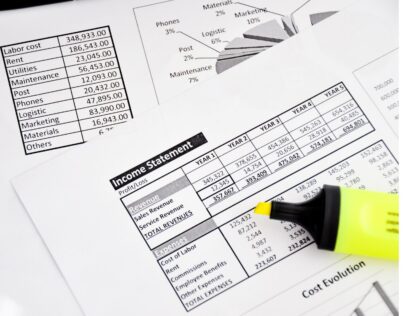Perusing Uber’s 2020 10-k, you’ll find on the balance sheet a deferred tax asset of $14.5 billion. Intel’s 10-k, in contrast, reports a deferred tax liability of $3.12 billion. If you’re the type that enjoys reading SEC filings but are unfamiliar with the tax provision process, these large line items may be a little mysterious to you.
So, what exactly is a deferred tax asset or liability? Known collectively as deferreds, tax assets and liabilities are a product of the tax provision process, which reconciles a company’s book and tax income.
Deferreds consist of three items: timing adjustments, net operating losses, and tax credits. To understand the important role that deferred play in tax rates, tax planning, and company valuation, let’s look at each of these three items in turn.
“Deferreds consist of three items: timing adjustments, net operating losses, and tax credits.”
Time is on Your Side (Maybe)
Temporary tax adjustments are differences between book income and taxable income that will reverse over time.
These arise from income or expenses that are recognized by both financial accounting and tax accounting, but at different times: Your bonus payments to staff may be recorded as an expense for accounting purposes this year, when they are awarded, but for tax purposes, not until next year, when they are paid out. Temporary differences are therefore also known as timing differences.
Why do these differences exist? Because the two sets of rules, accounting and tax, are designed with opposing goals in mind. Accounting rules are intended to slow down income and speed up expenses, producing a more conservative depiction of a company’s financials. Regulators hope thereby to deter companies from misleading investors with inflated earnings reports.
Tax rules, in contrast, aim to do the opposite: they speed up taxable income and slow down deductible expenses. The intentions here are also good: Lawmakers aim to prevent companies from avoiding taxes by deflating their income or inflating their expenses.
“Accounting rules are intended to slow down income and speed up expenses. Tax rules do the opposite: They speed up taxable income and slow down expenses.”
Depreciation is perhaps the most common temporary adjustment. Let’s say your manufacturing business has acquired a new piece of machinery at a cost of $1 million.
For both book and tax purposes, you are entitled to fully depreciate the $1 million expense. However, for book purposes, your new purchase will be depreciated over ten years, while for tax purposes it will be depreciated over seven years.
That three-year differential will result in differing depreciation for book and taxable income. These differences will net out to zero over time.
Winning From Losing
If you’re a startup, or you’ve been aggressively pursuing market share, or you’ve just lived through a pandemic, your company may have finished your fiscal year in the red, recording a net operating loss (NOL). The silver lining to a difficult year, however, is that you now have a deferred tax asset: Last year’s loss will offset future taxable income, reducing your tax expense.
NOLs are born on a company’s tax returns. If the deductions on your tax return exceed your income for a given year, the result is a net operating loss. That NOL can be carried forward to offset your taxable income in future years.
So, why do lawmakers allow you to reduce your future tax payments? The intention here is to smooth out the tax burden on corporations.
NOL deductions allow businesses with less predictable income to smooth out the year-to-year volatility of their cash flows. Without NOLs, these businesses would, over time, pay more tax than a less volatile business with the same amount of income. NOLs, therefore, help level the playing field between companies with more and less predictable income.
“If the deductions on your tax return exceed your income for a given year, the result is a net operating loss.”
To illustrate, let’s say your company is a recent startup, still developing your idea for a robot dog groomer and therefore not yet generating revenue. With people to pay and an office to run, you have incurred expenses of, say, $250,000 in year one.
With no revenue yet coming in, you end the year with a loss of $250,000. For simplicity’s sake, assume that loss is the same for both book and tax purposes: When your first federal tax return is filed, you will have created a net operating loss of $250,000.
If you are a U.S. taxpayer, the IRS will allow your startup to use a net operating loss deduction to offset up to 80% of your future taxes—indefinitely until the NOL has been used in its entirety. You may prefer money in the bank, but your deferred tax asset does therefore have measurable value.
To quantify the benefit of your first-year NOL, simply multiply it by the federal tax rate of 21%: $250,000 x 21% = $52,500. That is the value of the deferred tax asset to be recorded on your balance sheet.
In year two, your fully developed robot groomer turns out to be a hit with dogs and dog owners alike and the result is a taxable income of $100,000—which means it’s time to cash in on your deferred tax asset.
Recall that you are permitted to offset 80% of taxable income with an NOL. Your deferred tax asset, therefore, reduces taxable income for the year from $100,000 to just $20,000.
Assuming a 21% federal rate, your tax liability falls from $21,000 to $4,200: The NOL has resulted in a cash savings of $16,800. That’s $16,800 you’ll be able to invest into your next product (robot dog walker, perhaps?). Your remaining $170,000 of NOL will be carried forward to subsequent tax years until fully utilized.
To underscore the tangible value of the assets created here, note that in June of 2021, CorMedix, a New Jersey-based biotech company sold its state tax benefits (its NOLs) to another New Jersey-based company for $1.3 million.
This was allowed under the New Jersey Technology Business Tax Certificate Transfer (NOL) program, which enables small biotech companies to sell a percentage of their net operating losses and research and development tax credits to unrelated (and profitable) corporations.
Similarly, it was formerly common for larger, profitable companies to buy up loss-making companies exclusively to offset their federal tax liability. The IRS became wise to this, however, and in 2020 made updates to section 382 which effectively prohibits large companies from trafficking in NOLs.
For smaller companies, however, NOL deductions are protected for the first three years. So, if you plan to sell a controlling stake in year three of your robot dog grooming business, make sure your asking price accounts for the value of the NOL deferred tax asset.
Giving Credit Where Tax is Due
Here’s some more good news for your year-two tax return: You don’t have to lose money to reduce your tax burden. A less painful way to add to your deferred tax asset is by claiming tax credits, a dollar-for-dollar reduction of your tax liability offered by governments to incentivize good behavior.
Some of the most common credits available to corporations are those for research and development, low-income housing, and renewable energy.
So, your remaining year-two liability of $4,200 could go lower still. Your innovative new manufacturing process, documented and approved by the government, has won your startup a research and development credit of $27,000. $4,200 of that credit can be put towards your year-two tax return, reducing your liability to zero.
The remaining $22,800 is then added to the deferred tax asset on your balance sheet, where it will lie in wait for future tax liabilities to offset.
Keeping Your Deferreds on Schedule
Between timing adjustments, NOLs, and credits, your deferreds are getting complicated. Of these, temporary timing differences will be the trickiest. In year one, your startup had just the single million-dollar piece of machinery to depreciate.
Imagine, however, 10 or 15 years in the future, when your startup is a fully fledged conglomerate, newly added to the Fortune 500: You are likely to have thousands of assets, acquired at all different times, with all different depreciable lives.
To keep things orderly and audit-ready, you will record your inventory of deferreds in the deferred rollforward schedule. The schedule is where you will add new assets, retire old ones, and record the book and tax differences in your depreciation expenses.
The beginning and ending balances of your deferred rollforward schedule represent deferred assets and liabilities that reside on your balance sheet. These balances rollforward from one year to the next, reflecting the acquisition and retirement of assets over the course of your company’s life.
To further complicate matters, there is also an element of judgment involved. Accounting regulators and tax administrations offer ample guidelines on what constitutes a deferred and how deferreds should be reported.
But you and your management team will also have to ask yourselves: are the stated value of these assets realizable?
Take, for example, the incumbent competitor in the dog grooming business, Big Groomer, Inc. With your entrance into the space, Big Groomer began losing market share and accruing losses.
For several years it added NOLs to the deferred tax asset on its balance sheet, expecting to utilize them as soon as it returned to making profits.
If, however, Big Groomer management determines they can no longer compete with your new robot offering and can therefore no longer realistically expect to make a profit in the future, the deferred tax asset must be written down to zero.
If the company does not ever make a profit, there will be no taxable income to offset, making the deferred tax asset worthless.
The value of an impaired deferred tax asset does not have to be reduced all the way to zero, however. If a company is uncertain whether it will be able to make use of the deduction, it can reduce the value of the asset on the balance sheet via a mechanism known as a valuation allowance.
Companies are required to establish a valuation allowance when management determines that a deferred tax asset may not be realized. If it’s decided there is more than a 50/50 chance that some or all of the deferred tax asset will go unused, a valuation allowance must be recorded to offset (i.e., reduce) the value of the asset.
“If a company is uncertain whether it will be able to make use of the deduction, it can reduce the value of the asset on the balance sheet with a valuation allowance.”
Like Uber ride-hailing, however, your robot dog groomer is sure to be a hit—so leave that deferred tax asset showing in full on your balance sheet.
The Exactera Takeaway: Deferreds Can Be an Asset
- A deferred tax asset/liability results from the over/underpayment, or advance payment, of taxes
- Deferreds consist of timing adjustments, net operating losses, and tax credits
- Temporary adjustments, resulting from differences in accounting and tax rules, are reflected in the deferred tax asset or liability
- Net operating losses allow loss-making companies to reduce future tax payments
- Tax credits can be utilized in future years via the deferred tax asset
- Deferreds can be an important element in a company’s valuation







